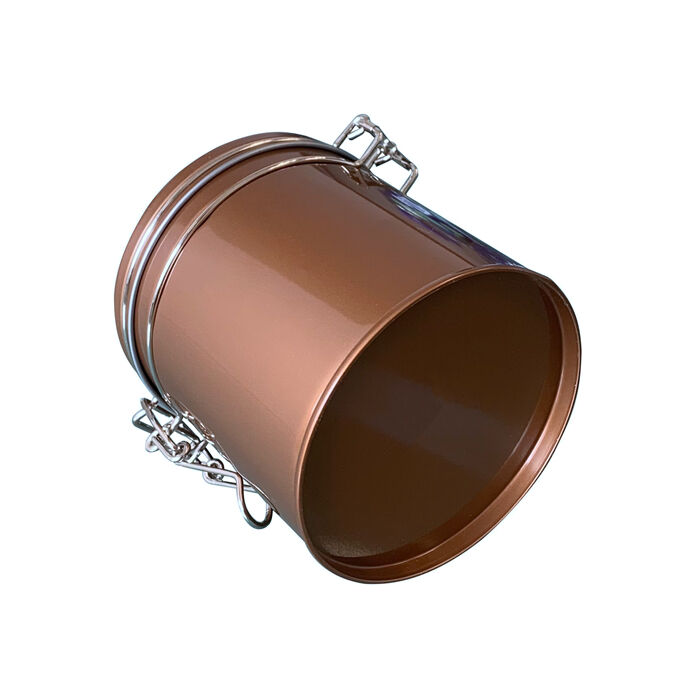Введение
Промышленность, которая нуждается в ржавчивых консервах и крышках для упаковки продуктов питания для долгосрочного хранения оборудования и электроники Ржавчина плохая Новости для внешней части банки, но это также может ослабить структуру или загрязнить whitewater's внутри. Так распознавание антикоррозионной жестянки и крышки также представляет ценность как для потребителей, так и для предприятий. В этом посте мы объясним различные методы, с помощью которых можно выяснить, является ли банка с крышкой устойчивой к коррозии, и таким образом выбрать только ту упаковку, которая лучше всего подходит для ваших целей.
Понимание коррозии и ее влияния на жестяные банки и крышки
Ржавчина, форма окисленного железа или алюминия, обычно возникающая при взаимодействии с водой и воздухом. Ржавчина может привести к следующим последствиям для различных видов банок и крышек:
Структурная усталость: по мере образования и распространения ржавчины металл ослабевает до такой степени, что могут возникнуть протечки, если он не разрушится полностью.
Эстетическое ухудшение: пятна ржавчины непривлекательны и могут отпугивать потребителей.
Упаковка пищевых продуктов: упаковка может быть загрязнена ржавчиной, что делает содержимое опасным для употребления человеком.
Свойства антикоррозийных банок и крышек
Любые банки и крышки из нержавеющей стали являются антикоррозийными, устойчивыми к ржавчине
Структурный состав: они изготовлены из металлов, таких как нержавеющая сталь, алюминий или других материалов, известных своей устойчивостью к ржавчине;
Покрытия: пищевой эмалью, эпоксидной смолой или порошковыми покрытиями, которые защищают металл от влаги и воздуха
Конструктивные особенности: эффективные механизмы герметизации и двойные закатанные края помогают предотвратить попадание влаги внутрь банки.
Методы визуального контроля
Если есть возможность осмотреть банку или верхнюю часть, попробуйте выяснить следующие свойства противокоррозийной защиты:
• Однородность: Поверхность должна быть гладкой и ровной, без ямок или потемнений, указывающих на начало коррозии.
• Качество покрытия: На покрытии не должно быть царапин, сколов или отслоений.
• Швы и края: Убедитесь, что швы плотные и что нет острых краев, которые могут стать входом для воды.
Тесты на оценку сопротивления ржавчине
Существует несколько тестов для оценки антикоррозийных свойств жести/крышки;
Тест солевого тумана (ASTM B117) – Этот тест помещает жестяную банку в камеру с солевым туманом для ускоренного обнаружения коррозии и оценки её производительности.
Тест погружения в воду: Этот тест проводится путем погружения банок в воду на длительное время для проверки образования ржавчины.
Тест камеры влажности: создается высокая влажность, и контейнеры подвергаются ей для точной оценки их сопротивления коррозии из-за влажности.
Испытания материалов и анализ
Отчего ржавеют банки и крышки в традиционном смысле?
Нержавеющие стали марок 304 и 316 доказали свою высокую устойчивость к коррозии.
Анализ покрытия: покрытия будут иметь уникальную толщину и состав, которые могут влиять на уровень устойчивости к ржавчине.
Сертификация резервуара: всегда ищите отличные показатели сжимающей коррозии или сертификаты.
Долговечность и обслуживание
Даже им требуется правильный уход для поддержания работоспособности неподдающихся ржавчине банок и крышек:
Хранение: банки следует хранить в сухих прохладных местах, подальше от влаги и влажности.
Чистота: регулярная чистка может помочь удалить агенты, вызывающие ржавчину.
Осмотр: Регулярные проверки могут выявить раннюю коррозию.
Детали о производителе и сертификаты
Производи C тель детали уровня продукта
Гарантии и гарантийные обязательства: наличие гарантии — хороший знак того, что производитель автомобилей уверен в защите от коррозии.
Сертификация: Также важно искать сертификаты, такие как ISO 9001, которые могут гарантировать нам качество и соответствие стандартам производительности.
Информация о продукте: подробное описание спецификаций товара или его результатов в тестах поможет вам принять решение о покупке.
Реальные показатели
Используйте кейсы и опыт пользователей для предоставления практических примеров;
Отзывы: Реальные отзывы клиентов в отзывах о продукте или рекомендациях пользователей помогут вам оценить, насколько продукт справляется с ржавчиной, без проведения собственных экспериментов Машины детали машин.подать заявку на кредит онлайн.
Кейсы: Кейсы могут быть показательными в отношении того, как банки ведут себя при определенных условиях.
Отчеты о тестировании: Где отчеты о независимом тестировании могут предоставить объективную информацию успокоения без рекламного стимула.
Как выбрать антикоррозийную банку или крышку
Что нужно учитывать при выборе банок и крышек с антикоррозийными свойствами.
Требования продукта: Тип продукта и его восприимчивость к влаге определят необходимый уровень защиты от ржавчины.
Стоимость: Хотя это может быть дороже, начало использования антикоррозийных банок и крышек может сэкономить деньги в долгосрочной перспективе, так как сохранение содержимого означает покупку продукта реже.
Эстетика: Убедитесь, что выбранная банка или крышка соответствует вашему бренду и ожиданиям качества.
Как очистить и ухаживать за антикоррозийными банками/крышками
Как поддерживать ваши антикоррозийные банки и крышки:
•Осторожная обработка: Любые вмятины и царапины могут повредить защитный слой.
•Регулярный осмотр: Необходимо проводить для выявления ржавчины и устранения её как можно скорее.
•Ремонт и замена: Если ржавчина всё же появилась, отремонтируйте или замените повреждённые части.
Заключение
Это очень важно для сохранения вашего Продукты и чтобы сохранить лояльность потребителей, вы можете выбрать ржавчивые банки и крышки. Знание того, какие предметы нержавеют, как их проверять и что можно сделать с техническим обслуживанием, чтобы убедиться, что они соответствуют требованиям срока годности. Качественное производство также означает, что вы можете инвестировать в ржавчивые банки и крышки, которые, безусловно, сохранят свежесть ваших продуктов намного дольше.
Оглавление
- Введение
- Понимание коррозии и ее влияния на жестяные банки и крышки
- Свойства антикоррозийных банок и крышек
- Методы визуального контроля
- Тесты на оценку сопротивления ржавчине
- Испытания материалов и анализ
- Долговечность и обслуживание
- Производи C тель детали уровня продукта
- Реальные показатели
- Как выбрать антикоррозийную банку или крышку
- Как очистить и ухаживать за антикоррозийными банками/крышками
- Заключение

 EN
EN
 AR
AR BG
BG HR
HR CS
CS DA
DA NL
NL FI
FI FR
FR DE
DE EL
EL IT
IT JA
JA KO
KO NO
NO PL
PL PT
PT RO
RO RU
RU ES
ES SV
SV CA
CA IW
IW ID
ID LV
LV LT
LT SR
SR SK
SK SL
SL UK
UK VI
VI SQ
SQ HU
HU TR
TR FA
FA MS
MS GA
GA CY
CY LA
LA